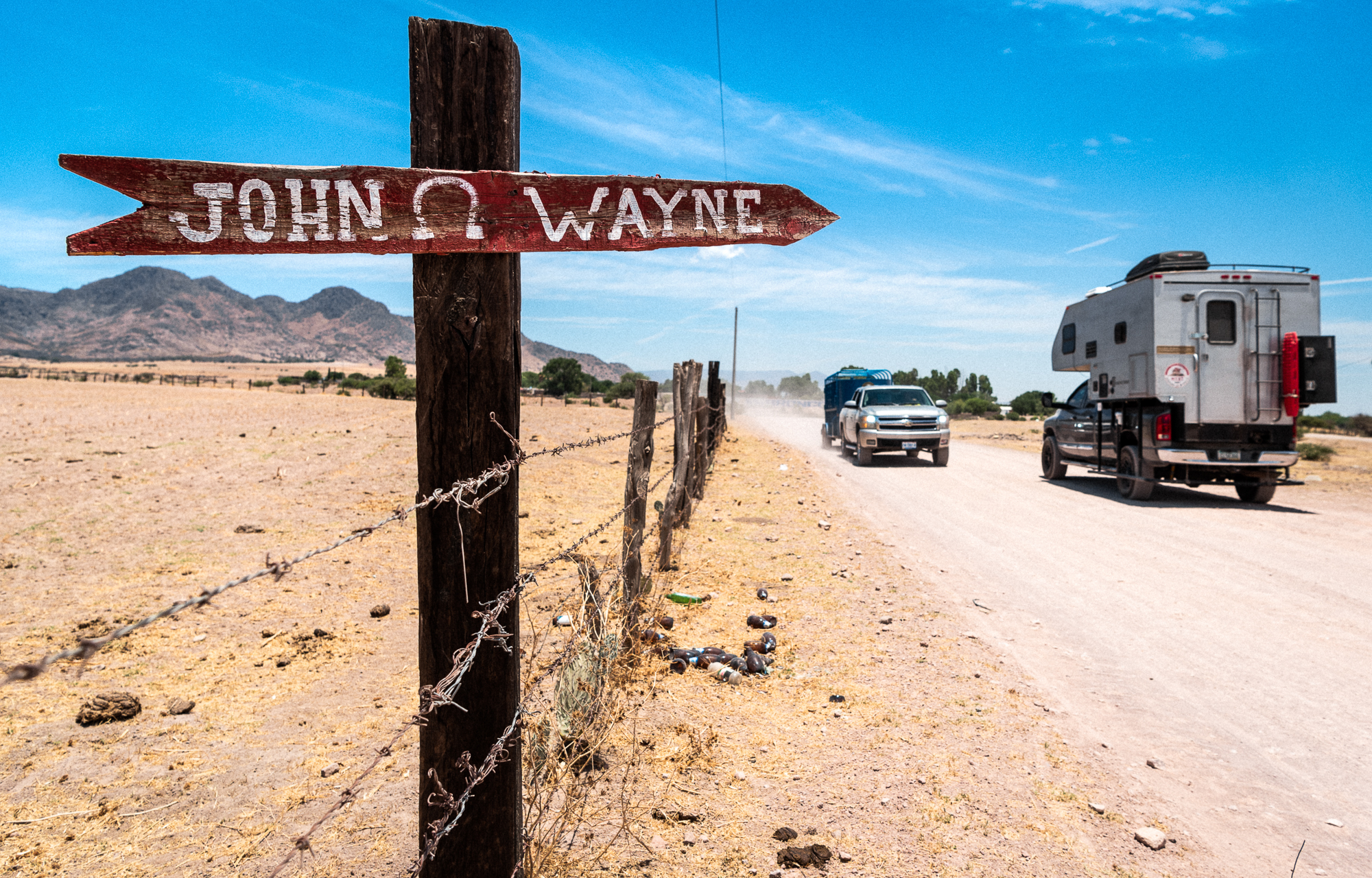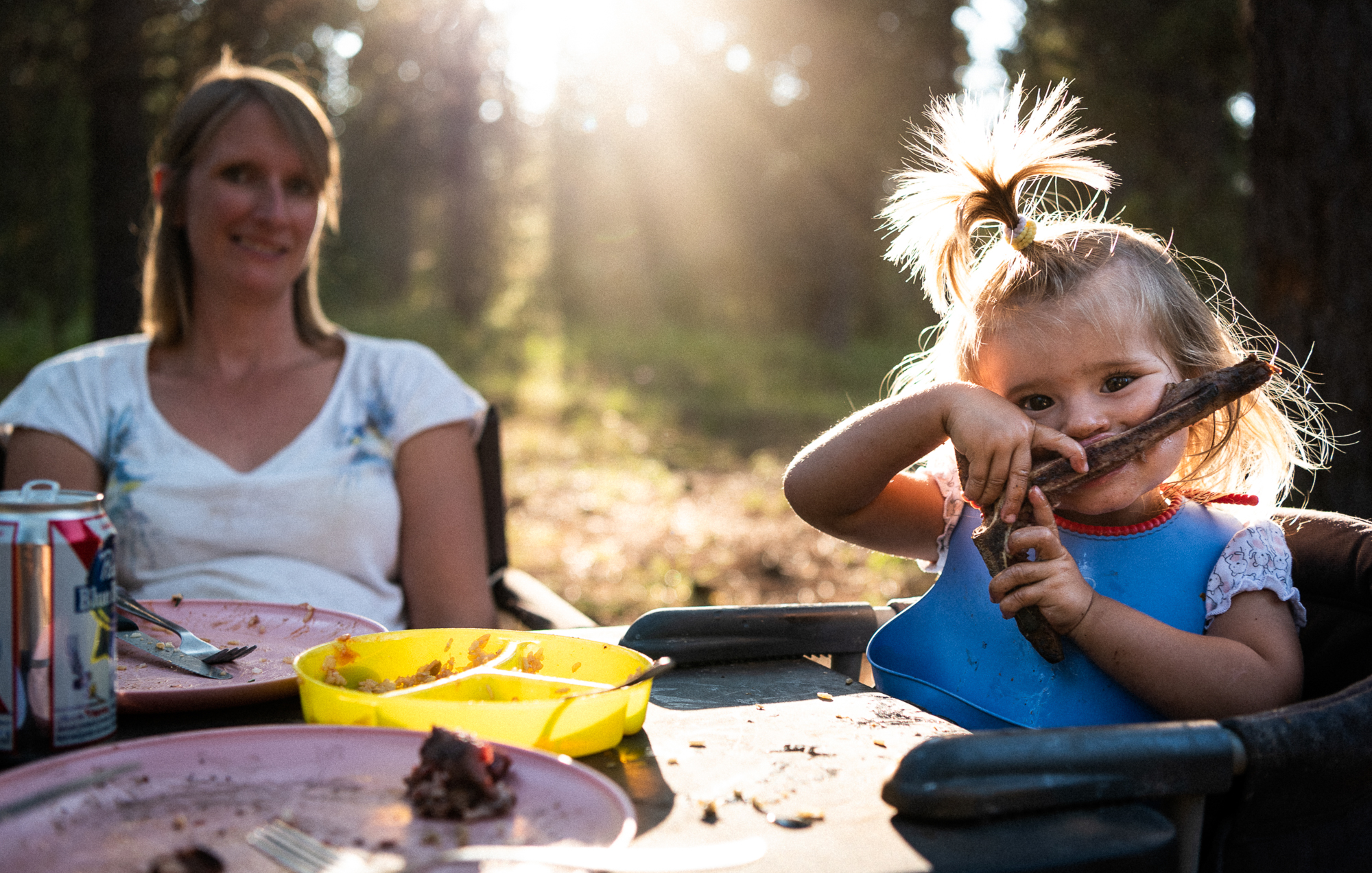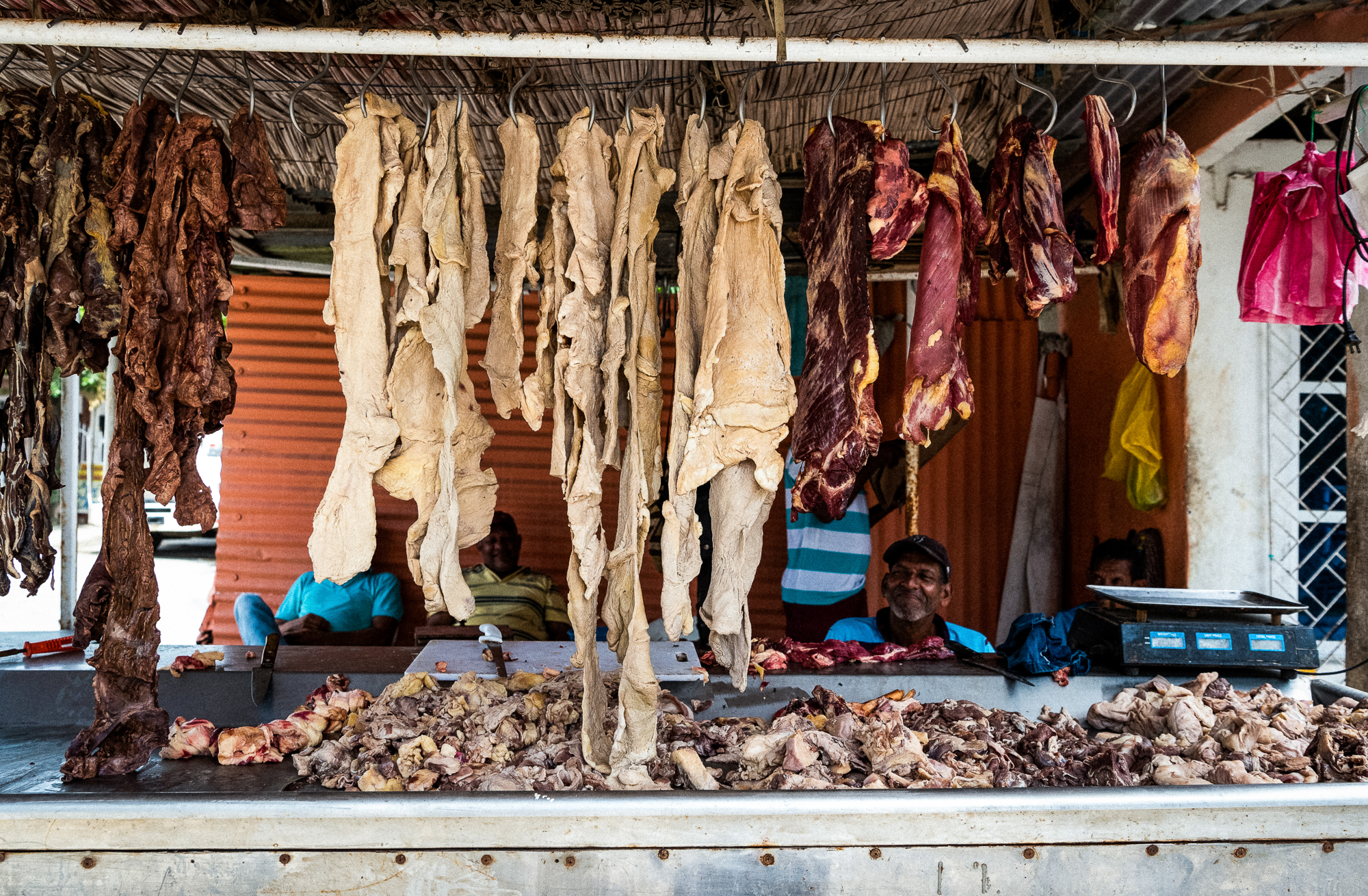Meat is eaten all over the world. Inuits eat it raw, having little fuel to cook with. In Africa, large strips of beef are grilled straight on the coals with no grate. In the USA, indulging in hamburgers and steaks is practically an institution. My preference is to grill a well-marbled piece of beef over charcoal.
For me, overlanding is all about my love affair with meat. I plan my daily routes, evenings, and social life around it. It’s my way of “meating” new friends on the road, bonding with them, and creating memories that outlast the final wisps of flavor and woodsmoke. And yet, overlanding confronts the dedicated carnivore with unique challenges, from quality and meat preservation to cost and cooking. I learned this the hard way when crossing the US border into Baja California. Having just left a bountiful land full of ribeyes and skirt steaks, searching for even a thin rasher of bacon here was proving to be difficult. This northeastern region of Mexico didn’t have the population to find enough reason to source a small tienda with a chuleta de cerdo or a bisteka de res. I feared I was destined to become a pescatarian, with only shrimp and fish in arm’s reach.
Then there were the markets across mainland Mexico and Guatemala, with an array of pork, beef, and chicken, all beautifully displayed but, unfortunately, not refrigerated. But the inner caveman does not give up. If you look hard enough, you will find it. And if you’re lucky, it will find you. Take, for example, the meat angels (that’s what I’m calling them). We were on the Bahía de los Ángeles after all—yes, that remote location of northern Baja. Out of nowhere, they rocked up at our campsite with a trunk full of ice-cold meats for sale. I may have wiped out our weekly budget in one day.



As a full-time overlander, I have the privilege of dedicating time to sourcing my meals, which means asking the locals where to locate the good stuff. Sometimes, it’s a hit; other times, it’s a miss. In some countries, meat is purely a means of getting by, feeding the family, or checking the daily protein box. A lot of butchers across Central America are delivering, but sadly, without the quality. If the assistant behind the counter struggles to explain what breed of cow he’s selling, it raises eyebrows for me. With quality, you only need a little bit of passion. And dedicated butchers are out there. Meet Chema, the most passionate of them all. He runs a few carnecerias in San Jose, Costa Rica. We find him at his Santa Catalina location after joining the queue that has snaked its way down the street. There is laughter, there is joy, and there are hot chicharrones on offer. This man, soon to become a friend of mine, can talk nothing but meat. He tells me stories of how he raises his Red Angus cows on his private finca and when he traveled to Spain on his own pilgrimage to find the best chorizo recipe. It is certainly no wonder his supply is the finest in town. And his bacon? Well, I’ll have to call him to find out the tale behind that one. It’s truly the best I’ve eaten on this side of the Atlantic.
Chema is a butcher who also cares about his industry and the environment. His cows enjoy happy lives in acres of fresh green pasture, and his three daughters have helped him reduce the amount of packaging used.
The impact meat consumption has on our environment continues to be a hot topic across the globe. People like Chema are certainly making a difference. But as I drive past huge cowboy ranches in Nicaragua (where they produce some of the finest beef in the world), it is evident that there is plenty of space for the livestock to roam. Watching the hardworking men pulling their carts with oxen, I can’t help but think of the good in meat production, too. Our purchases support the local economies and communities and bring bread to their tables.
Let’s not forget meat is also considered a luxury item that some simply cannot afford. I was in a supermarket in Cobàn, Guatemala, scouting out the freezer section, when I found my wife chatting with two volunteers from a charity called Mountaintop Promises. They’d seen our camper parked outside with our huge MeatAroundtheWorld stickers displayed and wondered if we would consider hanging out with them for a day and cooking some meat for the malnourished families they support. They work with two villages nearby, and these communities find even purchasing fruit and vegetables to be a costly affair—never mind a piece of meat. We agreed to present a feast together, with the centerpiece being a whole hog.



.
Where do you find a pig big enough to feed a village? A fellow overland traveler (and carnivore) helped me on my quest. We talked to local butchers who not only directed us to nearby farms but also left their shops and personally escorted us there—passion and dedication once again. We ended up buying an 80-pound Duroc for the villagers and a small piglet for our rehearsal. Yes, these pigs were still alive. We would have to slaughter them ourselves and make sure the act was done in a respectful and correct manner. And what a success it was. The reward, of course, being at the banquet table. Watching children, teenagers, their parents, and grandparents devouring each and every piece of succulent roasted pork and coming back for seconds, thirds, and even fourths was priceless. As the Mexicans always say, “Food tastes better when shared.”
My beloved grill continues to be a powerful tool in bringing people together. Not only does it serve as my outdoor kitchen, with Dutch oven roasts, baked potatoes, and grilled vegetables on the menu, but it can often substitute for that campfire everyone enjoys sitting around. Its unique compact wheel rim design, custom-made by a welder found in Teotihuacán, Mexico, attracts attention from passersby and provides an easy casual setting for strangers to get to know one another. Sometimes, I’ll spontaneously throw a few steaks on the griddle in the late afternoon as a quick appetizer for others.

And where might I be storing this meat, you may ask. Preservation on the road is key. When I find good quality meat, I buy it in bulk and store it in my two fridges and small freezer compartment (unfortunately for my wife and three-year-old daughter, there is no room for ice cream). The Engel compressor, which can also be used as a freezer, is located in the car and works like a charm. Meat can, after all, be cooked from frozen on a small fire until thawed out, and then with a quick searing to finish off—mm-hmm, tastes just as fresh.
Being a former owner of seven different barbecues back in my home country of Switzerland, one would assume that life on the road is full of sacrifices. Do I, for example, miss my huge offset smoker? Maybe a little, but slow cooking a pork shoulder for yummy pulled pork sandwiches in my engine bay whilst taking on an eight-hour drive on a hot, sweltering day in the Yucatán makes it all the more fun.
I am now in Panama, waving goodbye to “Silverskin,” my trusty overland rig. He is about to cross the Darién Gap, sailing into Colombia, where my family and I will join him to continue our meat pilgrimage. I have made it thus far, and I am proud. I have struck gold in many places and met amazing people in the process, and I am pleased to say that I am still not a pescatarian.
What lies ahead as I step into South America? Is it the promised land for carnivores? Will Peru, Uruguay, and Argentina be able to hold on to their reputation of having the most outstanding meat in the world? Will I really be snacking on deep-fried guinea pigs in Lima? There’s only one way to find out, and there’s no better way than the overlanding way. Until we “meat” again.

Editor’s Note: This article was originally published in Overland Journal’s Spring 2024 Issue.
Our No Compromise Clause: We do not accept advertorial content or allow advertising to influence our coverage, and our contributors are guaranteed editorial independence. Overland International may earn a small commission from affiliate links included in this article. We appreciate your support.


